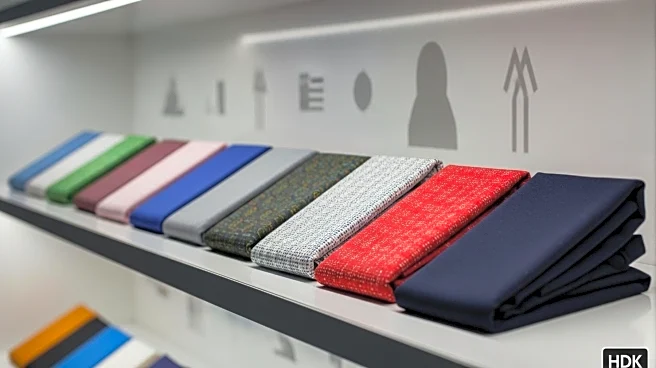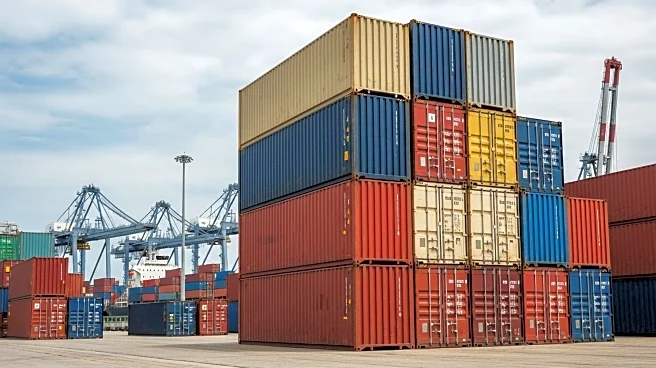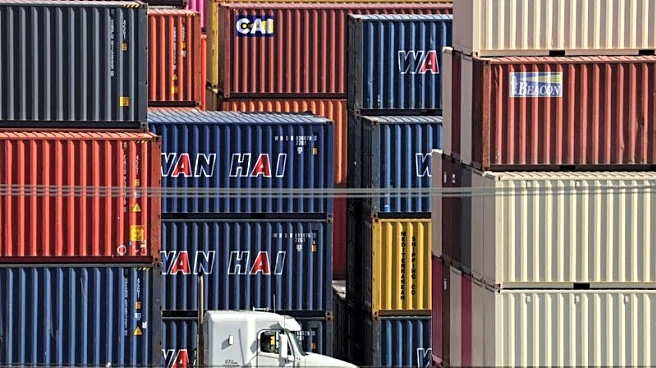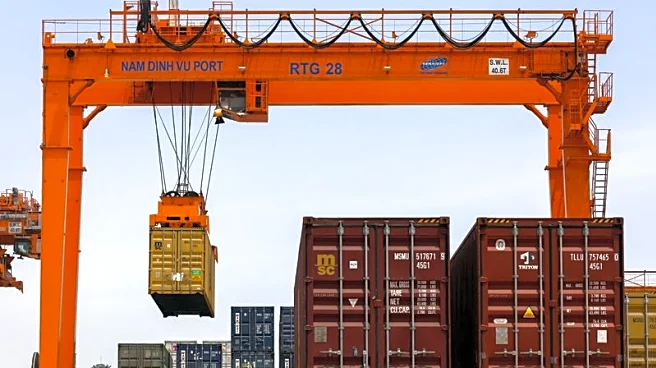What's Happening?
Chinese garment manufacturers are facing challenges due to ongoing trade conflicts with the United States and rising operational costs. Despite these pressures, the impact on exports to the U.S. has been minimal, with only a slight decline observed between January and June. Conversely, exports to Europe have increased. Manufacturers are increasingly outsourcing production of simpler garments like knitwear and T-shirts to countries such as Vietnam, Bangladesh, Myanmar, and Egypt. However, high-quality manufacturing requiring technical expertise remains in China. The China National Garment Association highlights the need for new strategies to cope with domestic competition and the shifting global market dynamics.
Why It's Important?
The adaptation strategies of Chinese garment manufacturers are crucial as they navigate the complexities of international trade conflicts and economic pressures. By diversifying production locations, these manufacturers aim to mitigate risks associated with tariffs and trade barriers, potentially influencing global supply chains. The shift in production could impact labor markets in countries like Vietnam and Bangladesh, while maintaining high-quality production in China ensures the retention of skilled jobs. These developments may affect pricing, availability, and competitiveness of Chinese garments in global markets, influencing consumer choices and industry standards.
What's Next?
Chinese garment manufacturers may continue to explore new markets and production strategies to enhance resilience against trade conflicts and economic fluctuations. The focus on maintaining high-quality production within China suggests ongoing investment in technology and skills development. As trade tensions persist, manufacturers might seek further diversification in export destinations and production partnerships. The evolving landscape could prompt policy adjustments and negotiations between China and its trade partners, potentially reshaping international trade agreements and practices.
Beyond the Headlines
The strategic shifts by Chinese garment manufacturers highlight broader implications for global trade and economic relations. The move towards outsourcing simpler production tasks reflects a trend of leveraging cost-effective labor markets, which may influence wage standards and working conditions in those regions. Additionally, the emphasis on high-quality production within China underscores the country's commitment to maintaining its competitive edge in the global fashion industry. These dynamics could lead to long-term shifts in trade policies and economic alliances, affecting global market stability and growth.













